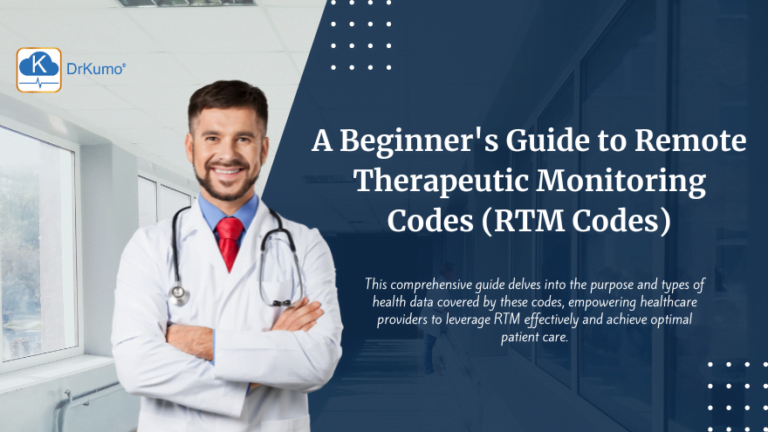Patient engagement has become an increasingly important concept in healthcare in recent years. It refers to the active participation of patients in their healthcare, including decision-making and self-management of their health. The importance of patient engagement in healthcare is multifaceted, including better patient outcomes, improved patient experience, and reduced readmission rates. This essay will explore the importance of patient engagement in healthcare, strategies to improve patient engagement, patient engagement in the healthcare industry, and the need for ongoing efforts to promote patient engagement. By understanding and implementing effective patient engagement strategies, healthcare providers and organizations can improve the overall health of their patients and help them become more actively engaged in their care.
Why is Patient Engagement Important?
Patient engagement is critical in improving healthcare outcomes and patient experience and reducing healthcare costs. When patients are engaged in their care, they are more likely to make informed decisions and actively participate in their health. Here are some reasons why patient engagement is essential:
- Better patient outcomes and health decisions: Engaged patients are more likely to follow their treatment plans and take a more active role in their health. This can improve health outcomes and help patients manage chronic conditions more effectively.
- Improved patient experience and satisfaction: When patients are engaged in their care, they feel more satisfied with their healthcare experience. Engaged patients report higher trust and confidence in their healthcare providers and are more likely to recommend their providers to others.
- Reduced readmission rates: Patients engaged in their care are more likely to understand their treatment options and follow through on their care plans. This can reduce the likelihood of readmission to the hospital and decrease healthcare costs.
- Improved health literacy and access to health information: Patient engagement can help improve health literacy and provide patients with the tools they need to make informed decisions about their care. Patients engaged in their care are more likely to understand health information and seek additional resources to improve their health.
- Increased engagement in personal care: Engaged patients are more likely to take an active role in their health, including making lifestyle changes, adhering to treatment plans, and self-monitoring. This can lead to better health outcomes and improved quality of life.
Overall, patient engagement is essential to improving the quality of care and patient health outcomes. By engaging with patients meaningfully, healthcare providers can help patients become more active participants in their care and make informed decisions about their health.
Strategies to Improve Better Patient Engagement in Healthcare
Improving patient engagement requires a multifaceted approach involving patient education, communication, and technology. Here are some effective strategies to improve patient engagement:
- Use a patient portal: Patient portals provide patients with secure access to their health information, including test results, medications, and treatment plans. They also allow patients to communicate with their healthcare providers and manage their appointments and prescriptions.
- Provide patient education: Educating patients about their conditions and treatment options can help improve health literacy and encourage patients to take an active role in their care. This can be done through pamphlets, educational videos, or in-person education sessions.
- Foster patient-provider communication: Effective communication is critical to building trust and encouraging patient engagement. Providers should encourage patients to ask questions, provide clear explanations of their conditions and treatment options, and take the time to listen to their patient’s concerns.
- Personalized patient care: One-size-fits-all approaches to healthcare can be ineffective. Providers should consider patient demographics, psychographic information, and health literacy skills to tailor their care to the individual needs of their patients.
- Encourage patient self-management: Providing patients with the tools to manage their care can improve patient engagement. This can include providing self-monitoring tools, encouraging patients to make lifestyle changes, and involving patients in decision-making.
- Use health information technology: Advanced technology, such as electronic health records (EHRs) and health apps, can help improve patient engagement by giving patients easy access to their health information and allowing them to communicate with their providers.
- Follow-up aftercare: Following up with patients’ aftercare can help reinforce the importance of self-management and encourage patients to stay engaged in their care. Providers should check in with patients regularly and provide additional resources and support as needed.
By implementing these strategies and other best practices for patient engagement, healthcare providers can help improve their patient’s overall health outcomes and satisfaction.
Patient Engagement Strategies in the Healthcare Industry
The importance of patient engagement in the healthcare industry has become increasingly apparent in recent years. Engaging with patients can help improve health outcomes, reduce readmissions, and increase patient satisfaction. Here are some ways the healthcare industry is prioritizing patient engagement:
- Best practices and industry leaders: Best practices are defined as the methods, techniques, or strategies identified as the most effective in achieving a particular outcome. In patient engagement, best practices refer to how healthcare organizations and providers can promote patient engagement and improve health outcomes. Industry leaders are organizations or individuals who have demonstrated expertise and innovation in their field and can serve as models for others to follow. By following best practices and learning from industry leaders, healthcare organizations and providers can develop effective strategies to promote patient engagement and improve patient outcomes.
- COVID-19 and patient engagement: The COVID-19 pandemic has significantly impacted patient engagement in healthcare. With social distancing guidelines and increased demand for remote care, healthcare providers have had to adapt quickly to continue to engage with their patients. The pandemic has also highlighted the importance of patient engagement in managing chronic conditions and preventing hospital readmissions. As such, healthcare providers and organizations must prioritize patient engagement strategies that can be delivered remotely to ensure that patients continue to receive high-quality care and stay engaged in the care process.
- Addressing disparities in patient engagement among different demographics: Research has shown disparities in patient engagement among other demographics, including race, ethnicity, and socioeconomic status. These disparities can impact health outcomes and prevent some patients from receiving the necessary care. Healthcare organizations and providers must address these disparities by developing patient engagement strategies tailored to each demographic’s needs. By taking a personalized approach to patient engagement and addressing disparities in care, healthcare organizations and providers can help ensure that every patient receives high-quality care and achieves better health outcomes.
- The role of healthcare organizations and clinicians in promoting patient engagement: Healthcare organizations and clinicians play a crucial role in promoting patient engagement. Healthcare organizations can implement patient engagement strategies encouraging patient education and empowering patients to manage their health actively. Clinicians can engage with patients in a personalized and patient-centered way, providing patients with the tools and resources they need to make informed decisions about their care. By working together, healthcare organizations and clinicians can promote patient engagement, improve health outcomes, and ensure patients receive the best possible care.
DrKumo RPM Solutions as a Patient Engagement Strategy to Improve Outcomes for Patient’s Health
Remote patient monitoring (RPM) is a crucial tool for achieving patient engagement in healthcare. With RPM, patients can stay connected to their healthcare providers and receive personalized care, regardless of location or medical condition. A disease management program enables patients to manage their care in a way that works best for them, which can increase their engagement and participation in the care process.
DrKumo is a technology leader in highly scalable, continuous, real-time remote patient monitoring solutions to manage their health issues in the comfort of their own homes and provides real-time intelligence to healthcare specialists for timely intervention. DrKumo rpm technologies, such as wearables and remote sensors, allow patients to share their health data with their providers and receive real-time feedback on their condition. This technology can help patients and their providers work together to identify trends in their health data and adjust their care plans accordingly. With DrKumo RPM, providers can also monitor patients’ progress and intervene if needed, which can help reduce hospital readmissions and improve health outcomes.
Takeaway
Patient engagement is a crucial component of high-quality healthcare. By engaging with patients, healthcare providers can help improve health outcomes, reduce readmissions, and increase patient satisfaction. To achieve better patient engagement, healthcare providers and organizations implement various strategies, including patient-centered care, improved access to care, health literacy, personalization, technology, and pandemic response. By focusing on patient engagement, the healthcare industry can help patients become more active in their health, make informed decisions, and achieve better health outcomes. As the industry continues to evolve and new technology and best practices emerge, healthcare providers must prioritize patient engagement and work with patients to achieve their healthcare goals.
To healthcare providers and organizations, please prioritize remote patient monitoring for better patient engagement. Contact DrKumo now!








